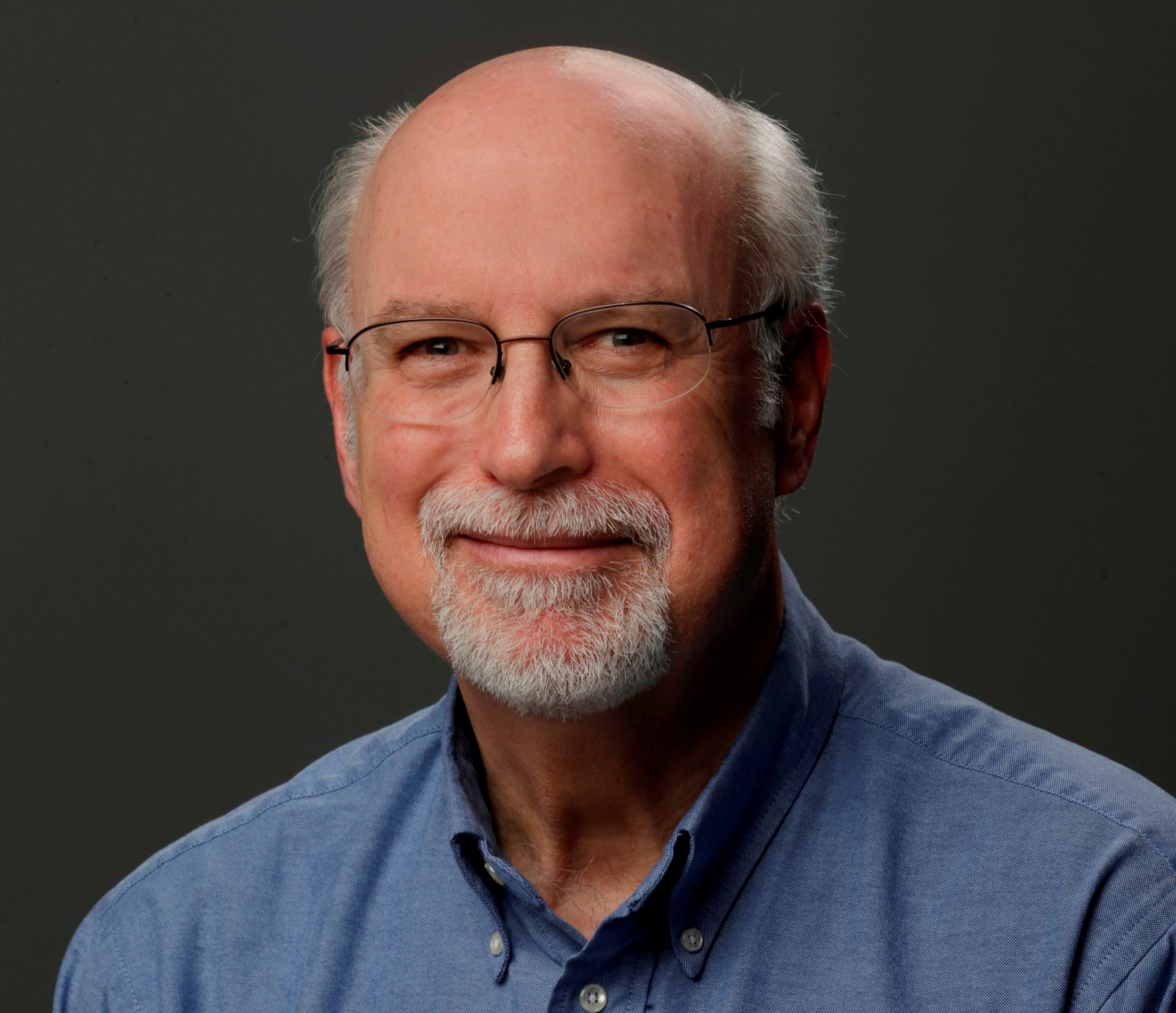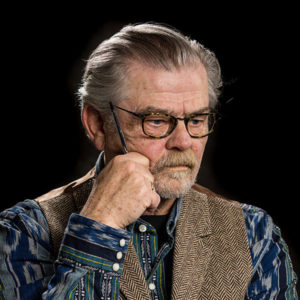
THE BOOK: DR COPTR: The Flying Physician Who Kept His Promise To Tangier Island
PUBLISHED IN: 2018
THE AUTHOR: Bill Lohmann.
THE PUBLISHER: Dementi Books, a small publishing house outside Richmond, Va., founded by Wayne Dementi, whose family is long synonymous with fine photography in Central Virginia.
 SUMMARY: DR COPTR is the story of Dr. David Nichols and the extraordinary relationship he forged with Tangier Island. Nichols, a physician and pilot on the Northern Neck of Virginia, began flying to the tiny island in the Chesapeake Bay on his day off each week to provide medical care to islanders who had been without a resident doctor for many years. He vowed he would never abandon them, and for more than three decades he never did. The one-time national “Country Doctor of the Year” left a remarkable legacy on the island, including a state-of-the-art health center and his successor, a high school dropout he encouraged and mentored and now is the island’s primary medical caregiver. Also woven into the fabric of the story is Tangier’s current plight: its gradual disappearance due largely to climate change.
SUMMARY: DR COPTR is the story of Dr. David Nichols and the extraordinary relationship he forged with Tangier Island. Nichols, a physician and pilot on the Northern Neck of Virginia, began flying to the tiny island in the Chesapeake Bay on his day off each week to provide medical care to islanders who had been without a resident doctor for many years. He vowed he would never abandon them, and for more than three decades he never did. The one-time national “Country Doctor of the Year” left a remarkable legacy on the island, including a state-of-the-art health center and his successor, a high school dropout he encouraged and mentored and now is the island’s primary medical caregiver. Also woven into the fabric of the story is Tangier’s current plight: its gradual disappearance due largely to climate change.
THE BACK STORY: I met Dr. Nichols in the spring of 2010 when I interviewed him for a freelance piece about Tangier I was writing for Parade magazine. The island’s health center was under construction and scheduled to open later that year. David and I agreed to meet again in August, so I could write another story for my day job as a feature writer and columnist for the Richmond Times-Dispatch. Shortly before we were to reconnect, David was diagnosed with inoperable cancer. The tone and focus of the story changed as the island braced for the loss of a man that residents considered a member of the family. In his final months, he asked if I would consider writing a book about his work on Tangier. I agreed and set to work. Real life and my day job got in the way, but I finally completed the book eight years later.
WHY THIS TITLE?: DR COPTR was the license plate on David’s car. He had begun flying the island in a single-engine Cessna, but switched to a helicopter in later years.
WHY WOULD SOMEONE WANT TO READ IT? I found David and history most compelling, particularly when coupled with Tangier, which kept calling me back after I first visited about 20 years ago. I’ve always been intrigued by the remote island and its people, who still speak with a dialect that some believe traces back to their original English settlers. Far from a resort, Tangier is a blue-collar village whose residents have worked as watermen – harvesting crabs and oysters from the bay for generations. There are few cars on the island – it’s only about a mile long, so there’s nowhere to go – and the island has been losing ground for decades because of rising sea levels, erosion and subsidence. Scientists say the island might not be habitable within 50 years.
REVIEW COMMENTS:
“The story of the late Dr. David Nichols and his dream to care for the medical needs of the forgotten and beautiful people of Tangier Island is one for the ages. Bill Lohmann engages his razor-sharp journalistic skills with the grace notes of Southern storytelling to bring us DR COPTR. Glorious and uplifting, this story will inspire you. Required reading for every Virginian and every citizen who embraces healthcare as a hopeful art as much as a healing one.” –Adriana Trigiani, author of Big Stone Gap” and other books.
“Dr. Nichols was such a great, great man, and he saved so many lives. He loved Tangier dearly and was devoted to it. I hope this book will help people understand what Dr. Nichols meant to Tangier.” –Tangier Mayor James “Ooker” Eskridge.
“This book so beautifully crafted by Bill Lohmann is a fitting tribute to my good friend Dr. David Nichols and the iconic community on Tangier Island. If you never had the opportunity to meet David this book will introduce you to this remarkable, caring man.
“David and Tangier were perfect for each other. Tangier is an insular community where you need to earn acceptance, and they don’t suffer fools gladly. David’s solid stature and loyalty made him a beloved member of the island. David was a keen observer, he knew how to diagnose complex medical problems and challenge those around him to strive for greatness. He taught us by example that there are no shortcuts on the road to meaningful accomplishment. The David B. Nichols Health Center was built by and continues to be supported by the Tangier Island Foundation, which David and I started. It stands today as a legacy to this great man.
“David died too early. I said at the time that I had never seen a man love a place with such a passion. When he was buried on the island next to the clinic, you could sense the closure. He was happy. He achieved what was most important to him: a life well lived, doing his best.” — Jimmie Carter, founder and president of the Tangier Island Health Foundation
AUTHOR PROFILE: I’ve spent more than 40 years in the news business, starting as a sports writer with the Charlottesville Daily Progress, working for United Press International in bureaus in Richmond, Orlando and Atlanta and eventually came back home to Richmond, where I’m a columnist with the Richmond Times-Dispatch. I’ve authored four other books, including a compilation of columns from my family’s cross-country road trip in 2000 (“Are We There Yet?”), a travel guide about Virginia (“Backroads and Byways of Virginia”) and a pair of coffee-table books that were collaborations with my good friend and photo legend Bob Brown (“Back Roads: People, Places and Pie Around Virginia” and “On the Back Roads Again: More People, Places and Pie Around Virginia”). I was the recipient of the 2019 George Mason Award, presented by the Virginia Pro Chapter of the Society of Professional Journalists, for outstanding contributions to Virginia journalism.
LOCAL OUTLETS: : http://www.drcoptr.com Also Richmond-area shops such as Book People and Fountain Bookstore, as well as Amazon and Barnes & Noble. An ebook is also available.
PRICE: $23.75 .
CONTACT THE AUTHOR: Bill.Lohmann@gmail.com or wlohmann@timesdispatch.com. https://www.drcoptr.com/ You can also find me at http://www.facebook.com/bill.lohmann and on Twitter @BillLohmann
SAMPLE CHAPTER:
Chapter 1
Waiting for the doc
‘He’s always teaching’
On a blustery November Saturday, the wind blowing hard off the bay, Inez Pruitt drove her golf cart to the Tangier Island Airport, parked near the landing strip and waited. “Airport” is kind of a strong word for the facility: 2400 feet of asphalt airstrip surrounded by grass and dirt on the western edge of the island. There is no terminal or tower or any other structure, for that matter. But the airport represents one of the important lifelines to the outside world, allowing visitors to fly in for business or lunch and making it possible for residents to be plucked from the island in the event of emergencies and transported quickly to the mainland for medical care.
The airport also enables physicians to make house calls.
As Pruitt searched the sky for the helicopter piloted by Dr. David Nichols, she considered how glad she was that he was making a special trip to see a patient who had become ill but was refusing to leave the island for treatment. She also thought about how she dreaded, at least a little, having to face Nichols again.
Nichols was a physician who lived on Virginia’s mainland and for years had made a weekly trip to the tiny Chesapeake Bay island – it was almost always Thursdays when he or someone from his practice would make the 15-minute flight to Tangier – to tend to the medical needs of its residents. The island had no resident physician, and Nichols had adopted the place and its people. Over the years he had been coming to Tangier, he had essentially become one of the islanders, no small feat in a place where wary residents welcome outsiders but hold them at arm’s length, at least at first. Unless you live there and know well the joy and hardship of having a home on a fragile speck of land in the middle of the bay or you make your living on the water as generations of Tangiermen have done, you can’t truly become one of them. Nichols had managed to bridge that divide.
However, he and Pruitt, at this point, were another story. Pruitt had worked for Nichols in the Tangier clinic for about a decade, learning the medical business from the ground up. A lifelong resident of Tangier, she was a high school dropout who had evolved from fetching sandwiches for the clinic staff to performing the duties of a nurse. She proved to be a fast learner and Nichols a good teacher. He taught her everything, including this: the patient always comes first. All of Nichols’ expectations, demands and occasional barking intimidated Pruitt at first; she was terrified of him. But then she realized everything he did was for the good of the patient. Everything. He had a bad case of tunnel vision that manifested on occasion in outbursts directed at his staff, but it was nothing personal, she came to know, though that was a hard lesson to learn.
The more she watched Nichols, the clearer it became. She noticed the way he hugged the patients and held their hands and cried with them when the news was not good, the way he made house calls and didn’t mind crawling onto beds to tend to patients or simply to comfort them. He spoke to patients in a kind but straightforward way, not holding back if unpleasantness needed to be discussed but not in a manner that would make matters worse. At a time when medicine was taking a less personal and more corporate approach, when physicians found themselves increasingly squeezed by business demands and time constraints, and patients began to feel like two-legged widgets on an assembly line, Nichols was a throwback. He took his sweet time when meeting with patients. Pruitt and anyone else who worked in his office confirmed this with immense admiration and a tiny measure of exasperation: as he conversed and consoled, counseled and cajoled, appointments were backing up in the waiting room.
Pruitt could see Nichols was much more than merely a physician who dropped into Tangier once a week to check a few pulses, write a couple of prescriptions and mend a broken bone or two. To patients, he was a trusted friend, a brother. This, she figured out, is what medicine is about: not just procedures, technology and information, but also compassion. Nichols seemed to have this in spades. For her, this had become not so much a job as an education.
“He’s always teaching,” Pruitt said years later. “He doesn’t like to keep knowledge to himself. He loves to share it, and you just feed off that. He loves to teach, and he does it in such a way that you love to learn. His attitude has always been, ‘The world should be a better place because one has lived. We’re in this world to do something. Make it good.’”
Nichols and Pruitt made a good team, the willing teacher and the eager student, absorbing everything he had to offer. He saw in her considerable potential; she saw in him something to be emulated, a smart man doing something good for her beloved island. They were of one mind on many things; they came to be able to finish each other’s sentences, to know, somewhat eerily, what the other was thinking. Neither objected to hard work, and both exhibited an unmistakable single-mindedness. They also shared another trait: stubbornness. Yet, Nichols had the upper hand. He was in charge, and from time to time he flashed a fierce temper, though usually all was forgotten and forgiven a few minutes later. Despite his propensity to occasionally blow off a little steam, Nichols was not a man known to hold grudges.
Pruitt eventually moved past being intimidated, but she tired of his occasional criticism and reprimands, which could be over-dramatic – such as the time she had neglected to order a supply of X-ray film, and the clinic ran out.
“I just want you to know,” he blurted to her, “you’ve crippled the practice today!”
Because of changing personnel in the clinic and shifting assignments, Pruitt wound up doing a lot of lab work – drawing blood, processing it, analyzing urine samples. Important work, to be sure, but not what she enjoyed. She wasn’t working as much with patients or with Nichols. “It was just so bland,” she said. “I wasn’t getting anything out of it.” It also was a time of considerable personal stress as she was helping with her husband’s boat-building business and managing a gift shop, as well as assisting her parents as they moved into a new house, tending to her aging grandmother and getting the clinic ready for a federal inspection. Worst of all, her sister-in-law was dying of cancer.
Pruitt didn’t realize how unhappy she was at the clinic until she and Nichols had a difference of opinion over the use of a piece of equipment. Words were exchanged. She got angry and stewed over it. He wouldn’t budge. Neither would apologize. She was totally fed up – for reasons not solely connected to the dispute – so she quit. She didn’t just walk out, though; she gave him several weeks to find a replacement. Then she left in the spring of 1998. The months of summer dragged on, and the longer she stayed out, the more it looked like she would never return.
“He thought he was right, and he wouldn’t admit he was wrong,” Pruitt said. “I wouldn’t admit I was wrong either.”
Dr. Bob Newman, the other physician in Nichols’ practice across the bay in White Stone that came to Tangier on alternating Thursdays, called Pruitt several times, trying to talk her into coming back to the clinic. Her sister-in-law died and her kids went back to school in the fall, and Newman told her returning to the clinic would be good for her and good for the practice. She did indeed return in the fall, but on those Thursdays when Nichols came to Tangier, it was clear to her the freeze between the two had not thawed, and she was convinced he was still angry with her.
“He would barely speak to me,” she said.
Though, she noted that during the summer of her exile from the clinic Nichols called her when he acquired a new helicopter and invited her for a ride. In retrospect, perhaps he was extending a peace offering? They took off in the new helicopter, and Nichols landed nearby on an even smaller island, Port Isobel, home to an outpost of the Chesapeake Bay Foundation but otherwise uninhabited, and, Pruitt remembered with a laugh, “I really thought it was to kill me and hide my body there.” It wasn’t, and he didn’t. But Pruitt was struck by the fact he remained angry at her for quitting the clinic.
“Out of the office, I was a friend, but in the office I made him so mad,” she said, “Go figure.”
Then came the breezy Saturday in November – after weeks of Nichols’ cold-shoulder treatment since her return to the clinic – when Pruitt received a call from the adult daughter of a stroke patient on the island. Her father, who was already bedridden, seemed worse, and she didn’t know what to do. Would Pruitt come by to check on him? The daughter thought Pruitt knew about all things medical since she worked at the clinic. Pruitt didn’t, of course, but she was glad to look in on the woman’s father. Pruitt checked his vitals and determined something wasn’t right. She suggested the man would be better off in a hospital, which meant leaving the island, but the man was adamant that he didn’t want to go.
Pruitt called Jean Crockett, a nurse who lived on the island but was away for the day, and asked for advice. Crockett told her she needed to call one of the physicians from the White Stone practice. And, she said, the physician on call that day was Nichols.
Ugh, thought Pruitt. Nichols might not have been the last person on earth she wanted to call that Saturday, but he was on the short list.
“I didn’t want to talk to him,” she said, “but the patient was more important than my personal feelings.”
So, she took a deep breath, and she called. She explained the situation to Nichols. She suggested he call the family and insist the man be put on a boat to the mainland and a hospital.
“They’ll listen to you,” she told him.
No, Nichols said. He couldn’t make a decision based on what she was telling him. “I’m flying over to see what’s going on,” he said. “Meet me at the airport.”
It wasn’t long before Nichols’ helicopter came into view. He landed, walked over to Pruitt’s golf cart and climbed in. The conversation was “cordial,” Pruitt recalled, but nothing more. They reached the patient’s home, and Nichols went to work.
As he examined the patient, Nichols reported his findings to Pruitt, and he started quizzing her about what that information might lead her to believe about the patient’s condition. He systematically went through what could be causing the man’s discomfort and included Pruitt in the process – just as he always had– pointing out this and asking that. It was just like old times, and she was reminded why she had loved the job she had walked away from.
Finally, Nichols told the family that he could not rule out a brain hemorrhage and he couldn’t determine that without sending him to a hospital. But he also told the family it might not be a hemorrhage and that he was leaving it up to family members whether they wanted the man transported to a hospital, which was against the man’s wishes and could, at this stage of his life, cause him more stress and suffering. Ultimately, the family elected against the hospital option. (The man’s condition improved, and he lived several more years.)
Pruitt returned Nichols to his helicopter, and he flew home. That night, Pruitt lay in bed, sleepless, as the day ran around in her mind. She thought about all the knowledge she had gained from the house call to the ailing patient, and it suddenly struck her why she had grown so frustrated with her work that spring: she had stopped learning. She had simply been doing a job – lab work – and she hadn’t been doing what she loved to do, which was working with patients and seeing to it that the clinic ran smoothly. Everything going on in her life outside the clinic had only compounded what was going on inside it.
So, the next week she talked to Nichols, and they reached an understanding, and she returned to doing the work she loved all along. “The understanding was silent,” Pruitt said years later. “We just started back to working the way we always had prior to the ‘disagreement.’” Neither apologized; each was too hard-headed for that. However, even though Nichols wouldn’t say it, she could tell he wanted her back the way it used to be, and Pruitt wanted to be there, or as she put it, “I left because of him and returned because of him.”
“I had missed it so much,” she said. “I came back to loving my job. That’s when I realized that’s where I was supposed to be.
“I loved learning, and he loved teaching. In spite of us, we made a great team.”
![Krakow by [Sean Akerman]](https://www.amazon.com/images/I/413n3rhn-ZL.jpg) THE BOOK: Krakow.
THE BOOK: Krakow.
 THE BOOK: Phobophobia.
THE BOOK: Phobophobia. So—leaping now to the point—I made a pilgrimage those years ago through all of my spiral notebooks, found phrases, images, sounds, paradoxes, scraps of hilarity. Recopied them all on small strips of paper. Chose, one at a time, particular phobias listed in Steadman’s Medical Encyclopedia that intrigued me, and rifled through piles of those notebook gems until one or two or three or four of them felt right.
So—leaping now to the point—I made a pilgrimage those years ago through all of my spiral notebooks, found phrases, images, sounds, paradoxes, scraps of hilarity. Recopied them all on small strips of paper. Chose, one at a time, particular phobias listed in Steadman’s Medical Encyclopedia that intrigued me, and rifled through piles of those notebook gems until one or two or three or four of them felt right.
![Family Genus Species by [Kevin Allardice]](https://m.media-amazon.com/images/I/51aCtPm+bVL.jpg) This week’s other featured books, “Kimber,” by L.K. Hingey and “The Zipper Club: A Memoir,” by Thomas Mannella, can be found by scrolling down below this post, or by clicking the author’s name on our Authors page.
This week’s other featured books, “Kimber,” by L.K. Hingey and “The Zipper Club: A Memoir,” by Thomas Mannella, can be found by scrolling down below this post, or by clicking the author’s name on our Authors page. THE BACK STORY: I began writing this at the end of 2014, during the start of the Black Lives Matter protests, and I was interested in the ways that privileged, white, ostensibly progressive families were navigating, or failing to navigate, that cultural reckoning. I began thinking about that in conjunction with the Luis Bunuel film The Exterminating Angel — in which a group of elites become mysteriously trapped in a mansion — and that’s when this young woman’s visit to her sister’s backyard had absorbed enough energy to begin generating its own momentum.
THE BACK STORY: I began writing this at the end of 2014, during the start of the Black Lives Matter protests, and I was interested in the ways that privileged, white, ostensibly progressive families were navigating, or failing to navigate, that cultural reckoning. I began thinking about that in conjunction with the Luis Bunuel film The Exterminating Angel — in which a group of elites become mysteriously trapped in a mansion — and that’s when this young woman’s visit to her sister’s backyard had absorbed enough energy to begin generating its own momentum. THE BOOK: The Zipper Club: A Memoir
THE BOOK: The Zipper Club: A Memoir

![KIMBER: Book One of The Elyrian Chronicles by [L.K. Hingey]](https://m.media-amazon.com/images/I/41uZaj+RTTL.jpg)
 ONE-SENTENCE LOGLINE: Join fierce new heroine, Kimber, on a dangerous journey against corruption as she flees her underground refugee city, traveling through a surface world ravaged by solar winds and scarred by war in search for the evidence of inhumane genetic testing that may be all the can free her people from a life of oppression and segregation.
ONE-SENTENCE LOGLINE: Join fierce new heroine, Kimber, on a dangerous journey against corruption as she flees her underground refugee city, traveling through a surface world ravaged by solar winds and scarred by war in search for the evidence of inhumane genetic testing that may be all the can free her people from a life of oppression and segregation.
 This week’s other featured books, “Orders of Protection,” by Jenn Hollmeyer and “DR COPTR,” by Bill Lohmann, can be found by scrolling down below this post, or by clicking the author’s name on our Author’s page.
This week’s other featured books, “Orders of Protection,” by Jenn Hollmeyer and “DR COPTR,” by Bill Lohmann, can be found by scrolling down below this post, or by clicking the author’s name on our Author’s page. THE BOOK: Orders of Protection
THE BOOK: Orders of Protection![Orders of Protection (Katherine Anne Porter Prize in Short Fiction Book 18) by [Jenn Hollmeyer]](https://m.media-amazon.com/images/I/51PnuG0G+IL.jpg) WHY THIS TITLE: The title of the book is also the title of the first story. As I worked on the collection, the theme of protection became a common theme. I wanted to understand these characters’ fears and the emotional barriers they build to protect themselves.
WHY THIS TITLE: The title of the book is also the title of the first story. As I worked on the collection, the theme of protection became a common theme. I wanted to understand these characters’ fears and the emotional barriers they build to protect themselves.
 SUMMARY: DR COPTR is the story of Dr. David Nichols and the extraordinary relationship he forged with Tangier Island. Nichols, a physician and pilot on the Northern Neck of Virginia, began flying to the tiny island in the Chesapeake Bay on his day off each week to provide medical care to islanders who had been without a resident doctor for many years. He vowed he would never abandon them, and for more than three decades he never did. The one-time national “Country Doctor of the Year” left a remarkable legacy on the island, including a state-of-the-art health center and his successor, a high school dropout he encouraged and mentored and now is the island’s primary medical caregiver. Also woven into the fabric of the story is Tangier’s current plight: its gradual disappearance due largely to climate change.
SUMMARY: DR COPTR is the story of Dr. David Nichols and the extraordinary relationship he forged with Tangier Island. Nichols, a physician and pilot on the Northern Neck of Virginia, began flying to the tiny island in the Chesapeake Bay on his day off each week to provide medical care to islanders who had been without a resident doctor for many years. He vowed he would never abandon them, and for more than three decades he never did. The one-time national “Country Doctor of the Year” left a remarkable legacy on the island, including a state-of-the-art health center and his successor, a high school dropout he encouraged and mentored and now is the island’s primary medical caregiver. Also woven into the fabric of the story is Tangier’s current plight: its gradual disappearance due largely to climate change.